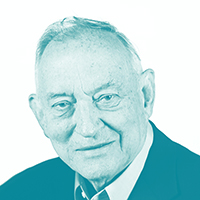Articles
Professor Robert Michael Nerem, bioengineer and director of the Georgia Tech/ Emory Centre for the Engineering of Living Tissues
 No engineering discipline exists in isolation, as demonstrated by the career of Professor Robert M Nerem. Made an honorary fellow of the IMechE in 1997, Nerem began his career in the early 1960s by focusing on aerospace engineering, followed by research on heat transfer in high-temperature shock-treated gases.
No engineering discipline exists in isolation, as demonstrated by the career of Professor Robert M Nerem. Made an honorary fellow of the IMechE in 1997, Nerem began his career in the early 1960s by focusing on aerospace engineering, followed by research on heat transfer in high-temperature shock-treated gases.
By the mid-1970s, however, an interest in bioengineering had begun to develop. Motivated initially by the possible role of fluid dynamics in the development of atherosclerosis, he began research into cardiovascular fluid dynamics.
As chairman of the department of mechanical engineering at the University of Houston, Texas, he established a cell culture laboratory and began to study the influence of physical forces on the cells of blood vessels. He later went on to focus on the mechanical properties of living tissues, and became director of the Georgia Tech/ Emory Centre for the Engineering of Living Tissues. Aimed at developing biological substitutes for body tissue, work at the centre could lead to the next generation of medical implants.
Professor Catherine Noakes, expert in environmental engineering for buildings at the University of Leeds
 In April 2020, the first wave of the Covid-19 pandemic was in full force. At the Scientific Advisory Group for Emergencies (Sage), Sir Patrick Vallance, Chris Whitty and others needed to know how the virus would spread – and how they could prevent it.
In April 2020, the first wave of the Covid-19 pandemic was in full force. At the Scientific Advisory Group for Emergencies (Sage), Sir Patrick Vallance, Chris Whitty and others needed to know how the virus would spread – and how they could prevent it.
Enter IMechE fellow Professor Catherine Noakes. With almost 20 years’ experience in the field, including work on UV disinfection devices, experience using computational fluid dynamics programs, and a more recent focus on ventilation, she was the perfect person to help.
Noakes became chair of the Sage Environment and Modelling Group, and it quickly became clear that understanding environmental spread would be central to developing guidance. As they set up the group, there was a deliberate emphasis on cross-disciplinary expertise.
“It’s seen as a medical problem, so the solution is driven by those with a medical training,” says Noakes. “It took time for engineering to become part of that conversation.” The professor, who is also part of the IMechE’s Covid-19 Task Force, is very proud of her role in changing the conversation about how the virus spreads. Along with nearly 250 scientists, she was a signatory to a letter that she says became a “turning point” in perceptions.
“Think back to the beginning, where we were all taught to wash our hands,” she says. “A group of us started shouting from quite early on, saying, ‘You need to think about the air, you’ve got to think about the airborne component’.”
In the storm of the pandemic, it would be understandable for someone in such a critical role to simply focus on the present. Not so for Noakes, who says the pandemic exposed “weaknesses right across society”. She recognised the opportunity for combining anti-Covid measures with positive changes elsewhere.
“I think the real big one there is to think about buildings in a much more holistic way, and find ways in which we can quantify some of the benefits that are less obvious,” she says. “There’s a lot of evidence to say good indoor environments have a lot of benefits for people, and I think what we need to do is to tie those together with where we have to tackle climate change. So we need buildings that are low energy and healthy.”
The key to positive change is not just the engineering solutions, she says, but putting people at the centre.
Make sure to check imeche.org/news throughout the week for more stories on Forward Thinkers, from nuclear energy pioneers to zero-emission aviation experts.
To find out more about the IMechE's 175 celebrations, visit the official home page.
Want the best engineering stories delivered straight to your inbox? The Professional Engineering newsletter gives you vital updates on the most cutting-edge engineering and exciting new job opportunities. To sign up, click here.
Content published by Professional Engineering does not necessarily represent the views of the Institution of Mechanical Engineers.